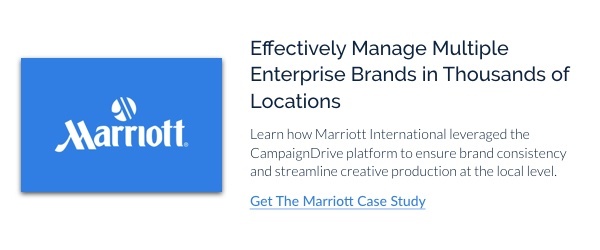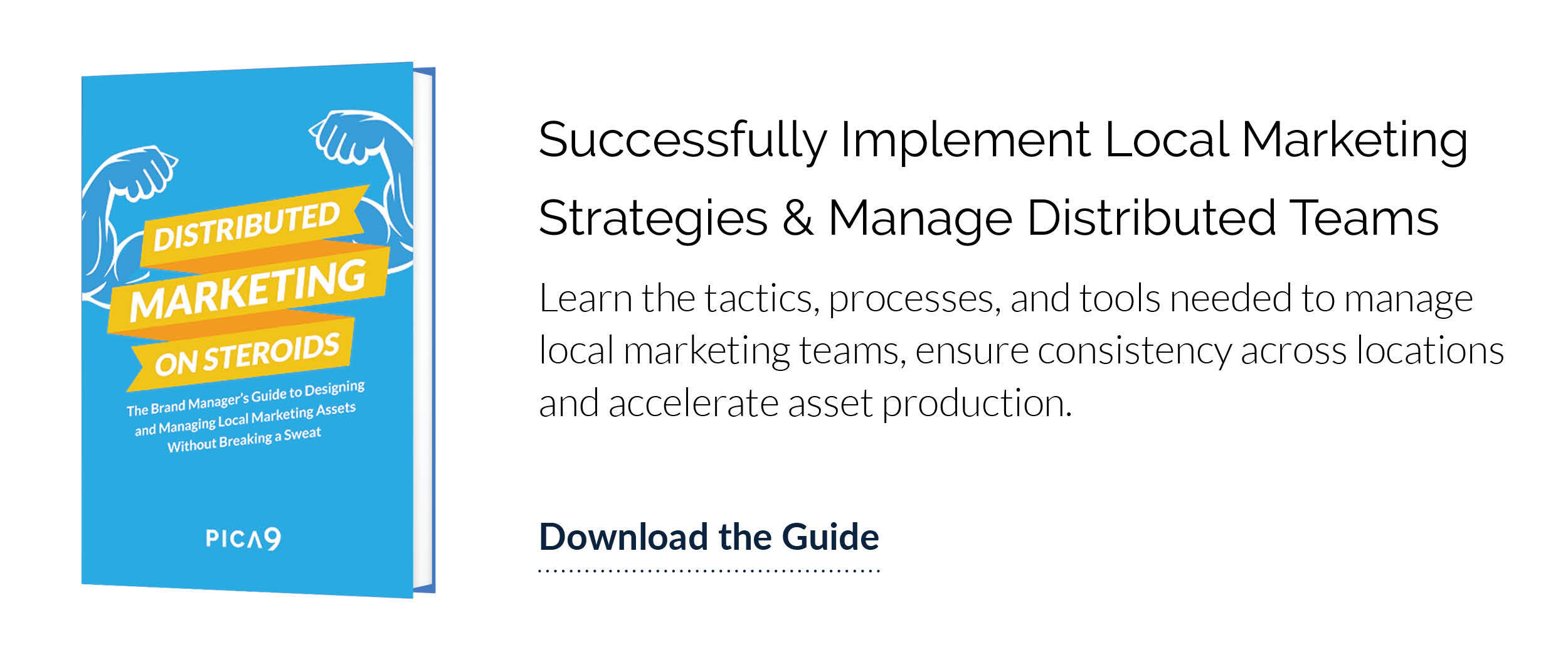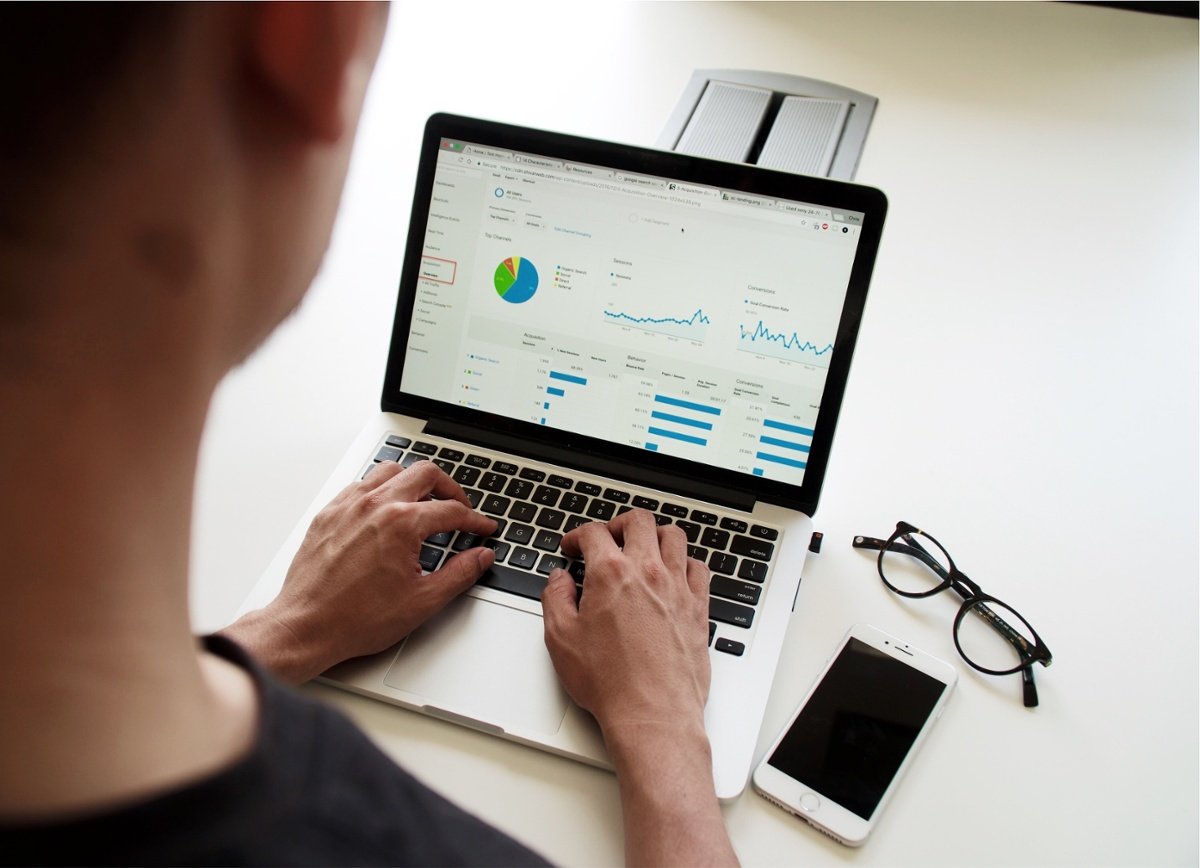In order to gain a competitive advantage in 2017, brand managers need the right technology. But all MarTech is not created equal. Not just any technology will do.
Brand managers need tech that's "heavy" enough to handle massive volumes of marketing assets, but "light" enough that everyone (including local marketers) can use it successfully.
A recent report by McKinsey & Co on marketing tech described this concept as "governance and cadence." Marketers are tasked with finding technology that can handle really complex processes and still enable rapid-fire marketing execution.
Easier said than done, right?
You may be thinking about adopting a digital asset management (DAM) tool to deal with your monolithic stores of assets, or you might be a DAM skeptic, with a failed implementation or two under your belt. In this blog, we'll discuss when DAM software is right for your company, and how to get the most out of the DAM you've got.
Do You Need Digital Asset Management?
Many marketers who adopt DAM for the first time have similar stories: they're tired of losing assets, and even more tired of spending hours looking for one file. Perhaps, the FTP server doesn't scale to marketing colleagues within the brand, let alone the network of affiliates.
They need a solution, and DAM is typically what's able to fill that need.
While the solutions available vary significantly, the DAM Foundation has established 10 characteristics that DAM solutions must deliver:
- Ingest assets individually or in mass, allowing for asset and metadata manipulation with unique identifiers.
- Secure content via access control lists (ACLs) and defined user roles.
- Store assets as binaries and metadata, allowing for edits to both aspects.
- Render & transform assets into other forms, i.e. new file types. These generated assets should be stored as aspects of the original file.
- Enrich assets through the extension of metadata and metrics regarding the use and reuse of an asset throughout its life cycle.
- Relate assets by tracking relationships between the original and variations, in the form of versioning.
- Establish Process, in asset management, creation, modification, and review.
- Enable users to find assets through search, metadata, collections, and other easy-to-use tools.
- Allow asset preview, without opening or downloading files, optimally within the search function to streamline processes.
- Produce and publish content by providing tools to share and distribute assets.
While these ten core functions serve as an important baseline for a "good" DAM, it's also important to understand variations in the type and purpose of DAM.
What Happens When You Aren't "Doing" DAM Right?
Technology is only effective when it's used correctly. Organizations might pick the wrong DAM for their needs. They may not use it correctly, or take the wrong approach to setup. The most common sources of DAM dissatisfaction we've encountered include:
Taxonomy Issues: If taxonomy is created by internal design or marketing experts, it might not "make sense" to the end user. This results in a situation where local marketers or affiliates are still struggling to find the right content.
How to Solve Taxonomy Issues: Selecting a DAM with smarter metadata can help with this issue. With tagging and search, you can ensure that assets are found as easily by your end users as a webpage on Google.
Modification Issues: Some DAM software makes it really difficult to modify and update assets "on the fly," or within the tool itself. These solutions may require the end-user to download the asset, make modifications, and re-upload it for approval.
How to Solve Modification Issues: This is a DAM issue through-and-through. Pick a tool with built-in capabilities for turning marketing assets into templates, which enables local affiliates to make modifications and submit for approval WITHOUT having to download, version, or re-upload anything.
DAM Best Practices for Distributed Brand Managers
Selecting a DAM that's designed for the unique needs of distributed brands is among the smartest choices you can make as a brand manager. You need the ability to distribute content quickly to the right people at the right time, ensure compliance across a large geographic area and track success metrics.
With the right tool on your side, distributed brand managers should:
1. Be Smart About "Ingesting"
The first step to success is what the DAM Foundation refers to as the "Ingest" function. When it comes to uploading content, make sure you're providing assets that are valuable to your local affiliates. Tag it with terminology that makes sense to your affiliates, not just your in-house designer. Provide clear instructions and training to your local affiliates about how to use the DAM correctly when it comes to everyday operations, like uploading local photos to ensure consistency.
2. Turn Assets into Templates
You could provide lengthy asset guides on how your local affiliates should best use marketing materials, or you could take advantage of templating features. By using this functionality, you can easily mark what can and can't be modified, effectively "locking" certain aspects while leaving others open to edits. With the help of proper categorization to get the right assets to the right people, you can make compliance easy.
3. Make it Bidirectional
While DAM could be used as just a tool for sharing assets with local affiliates, that's not necessarily the only thing it should do. The right DAM has the potential to be bidirectional.
For example, a hotel company with thousands of properties, may have local properties holding photoshoots every 12 months. Local managers want their new photos to be available to all of the designers at head office, for whatever marketing they would like to incorporate the local photos into. Bidirectional DAM allows the local hotel manager to upload new assets directly to the DAM, enabling head office to use recent and relevant local photos for global campaigns.
Brand-generated assets flow to your local affiliates, while their original materials and template modifications flow back to the home office. This enables you to learn from your local marketers, gain richer customer insights, and educate your affiliates on best practices.
Turning DAM Investment into Marketing Results
Buying marketing software doesn't equal return on investment. Success is a product of the right investment - used in a way that meets your needs.
For distributed brand managers, a digital asset management tool like CampaignDrive can enable you to achieve bidirectional communication with your local affiliates, unlock advanced templating features, and most importantly, make it easy for your local marketers to create successful, compliant local marketing.
Sources:






